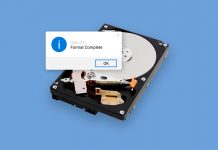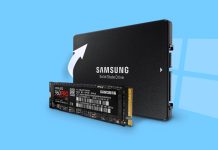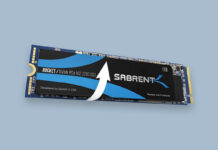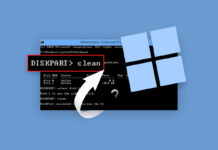
External hard drives offer a great way to extend the storage capabilities of your computer or share data with other users. They are just as susceptible to data loss as any other type of disk-based storage media.
If you make extensive use of portable drives, there is likely to be a time when you need to perform an external hard drive data recovery. When faced with lost or deleted files, recovery software offers a viable way to restore them.
Can Data from External Hard Drive Be Recovered?
Recovering data from a drive is possible because when you delete data, it’s not erased from the hard drive. It’s only removed from the file allocation table. The file allocation table is like the index page of a book, while the files are the pages.
When you delete a file, Windows removes it from the index page. However, the file continues to exist on your hard drive until it’s overwritten by new data. As long as the file or the hard disk isn’t encrypted or severely damaged, you should be able to recover data easily.
How to Recover Data from External Hard Drive with Disk Drill
Data recovery software is a cost-efficient alternative to sending your hard drive to a professional data recovery service. The application works as an extractor and recovers data from storage locations marked as unavailable to the operating system.
Disk Drill for Windows offers a flexible and effective method to recover data from an external hard disk. Follow these steps to recover your lost and deleted files from an external hard drive.
- Download and install the program on your Windows machine. Since you are recovering data from an external hard drive you can install the program on your computer’s main hard drive.
- Connect the external hard drive to your machine and launch Disk Drill.
- Select the external drive from the app’s list of available disks.
- Click the Search for lost data button to start scanning the device.
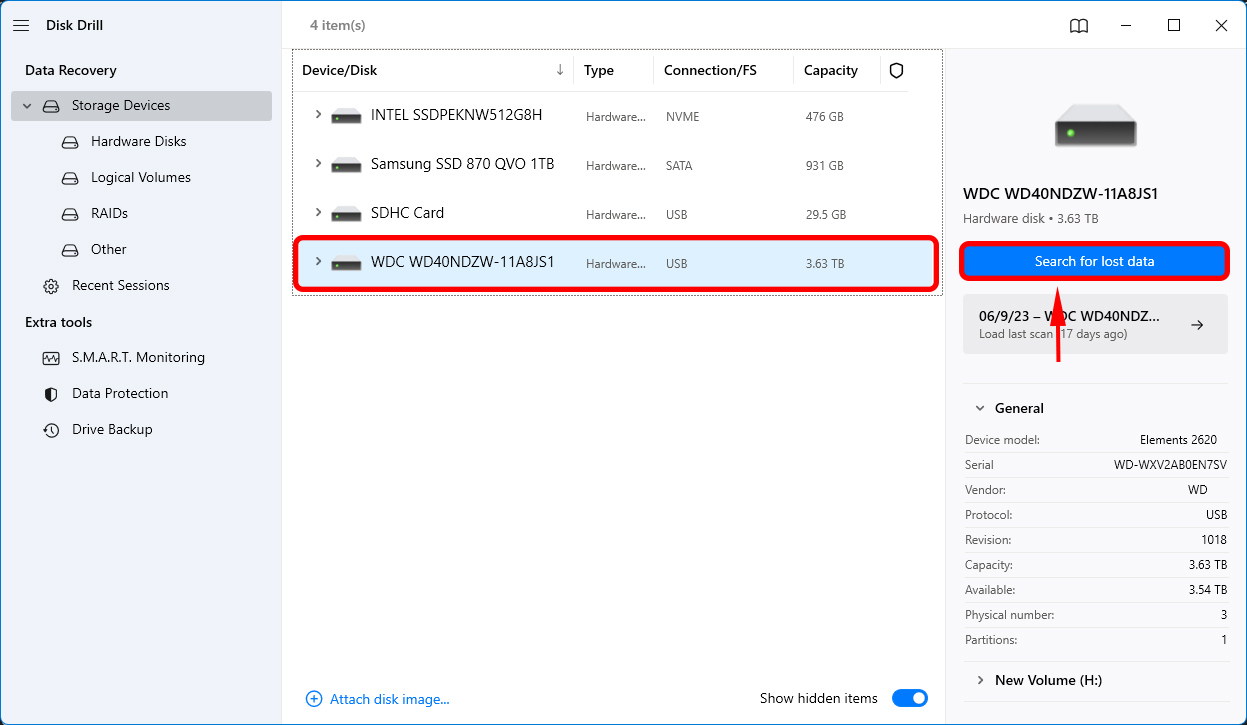
- Preview the files that can be recovered and select those you want to restore.
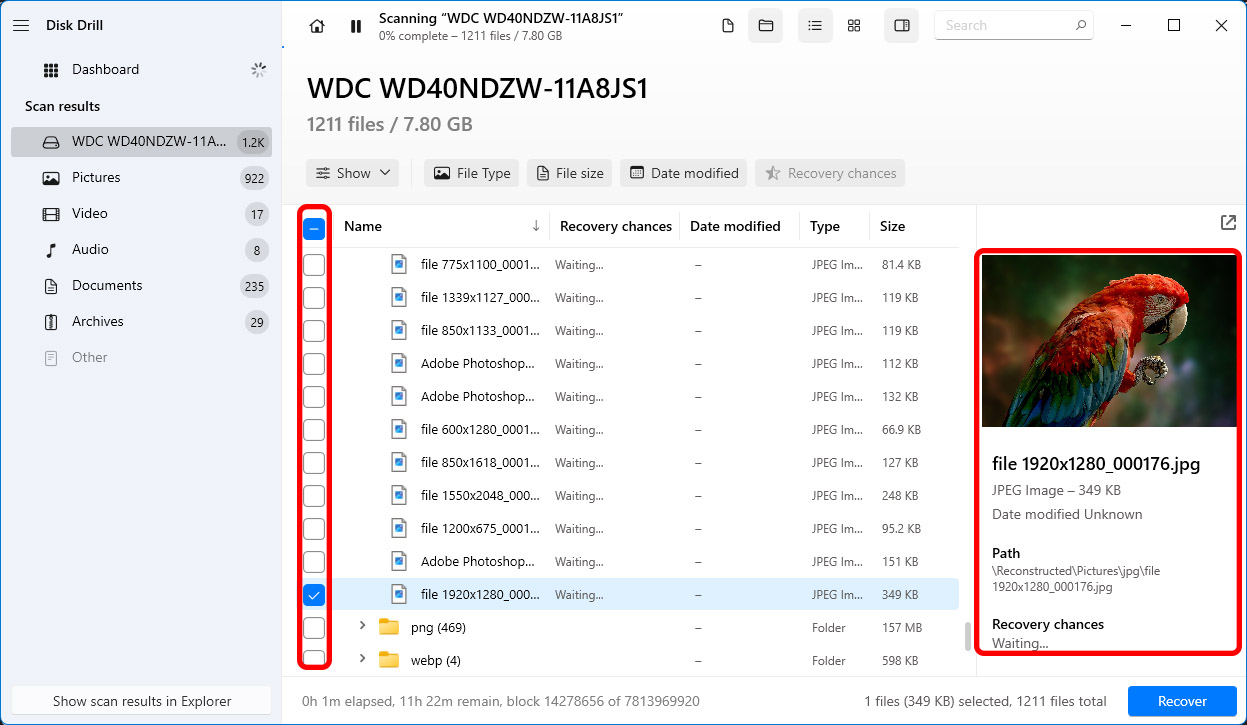
- Click the Recover button to retrieve the files you selected to a storage location of your choice. Don’t save the data to the external drive during recovery as it may lead to file corruption.
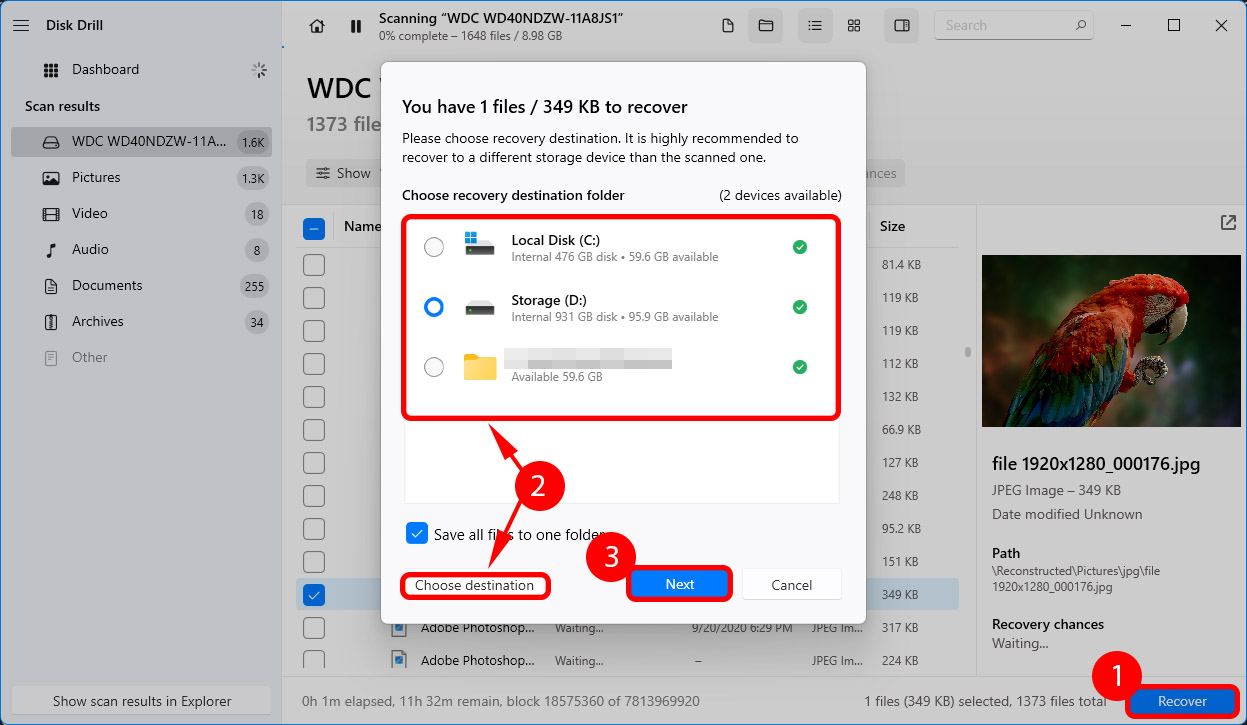
That’s all there is to it. In the space of a few clicks, you can restore data that has disappeared from an external hard drive.
Five Alternative Data Recovery Software Solutions
Though we highly recommend Disk Drill, here are five alternatives that can help you get back lost files from an external hard drive. We have looked at all of these solutions and present our findings to help you make an informed choice when searching for recovery software.
1. PhotoRec

PhotoRec is an open-source, multi-platform recovery solution that focuses on the underlying data and can work with any file system. The tool can perform recoveries on damaged file systems by searching for known file headers. It recognizes over 480 different file extensions including those of many video formats.
This is a command-line application that does not provide the intuitive interface of some other video recovery solutions. The lack of point-and-click recovery capabilities may make this a more difficult tool for non-experts to use. Filenames are not recovered which slows down recovery efforts when multiple files are involved.
Pros
- Unlimited free file recovery Supports many file types
- Freeware is updated annually and supported by its developers
- Acceptable recovery results for a freeware product
- No preview options are available
- Does not recover the filenames or folder structure
- Command-line interface
OS support: Windows, macOS, Linux, FreeBSD, NetBSD, OpenBSD, Sun Solaris
Price: Freeware
2. R-Studio
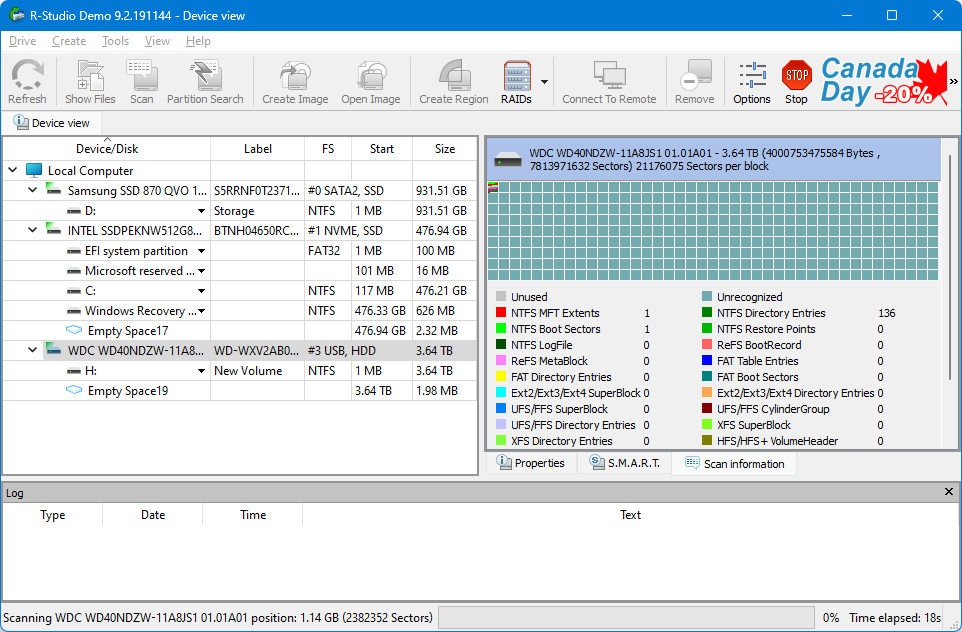
Studio is a commercial data recovery software tool for the Windows, Mac, and Linux operating systems. It’s a cross-platform solution that can recover files on any supported operating system from whichever OS you are using at the time.
R-Studio was developed to be used by data recovery professionals and has been redesigned to be more accessible to all users. It provides network recovery capabilities and has many advanced features that may not be needed by the average user.
Pros
- Cross-platform support for multiple operating systems
- Customizable known file types for added flexibility
- Recovers files over a network
- Advanced RAID reconstruction
- Interface and extensive features can be confusing for some users
- Trial version limited to recovering files of 256 KB or less
OS support: Windows, macOS, Linux
Price: Windows $49.99, Mac $79.99, Linux $79.99
3. Recuva

Recuva is a basic file recovery tool that uses a Windows File Explorer type of interface. The pro version of the tool supports many types of devices including virtual hard drives. Users on a strict budget may be attracted by the low price of the paid version of the software.
This tool only supports recovering videos on Windows machines. It may not recover all of your files, so if the lost files are valuable, you might want to try a different solution. In cases where you are not too concerned over recovery results, the freeware and low price of the paid app make it a tool that you might want to try out.
Pros
- A free version is available
- Automatic updates
- Recovers from damaged disks
- Securely deletes files
- Limited recovery capabilities in the free version
- Does not recover as much data as more reliable paid solutions
OS support: Windows
Price: $19.95
4. Undelete 360
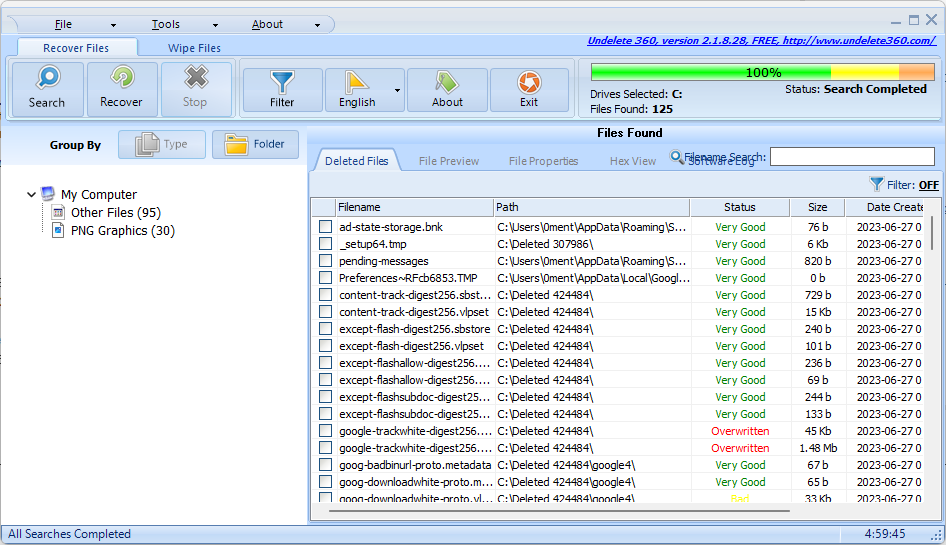
This freeware tool is designed for data recovery on older versions of the Windows OS. One of its attractive features is the ability to securely erase files from your machine, but it has limited scanning options and has not been updated in several years.
Pros
- Unlimited free recovery
- Securely erase files
- Graphically indicates deleted and lost files in a recoverable file tree
- Cannot scan damaged file systems Preview, file properties, and other features are restricted to the paid version
- No deep scanning mode
OS support: Older versions of the Windows OS
Price: Freeware
5. Tenorshare 4DDiG
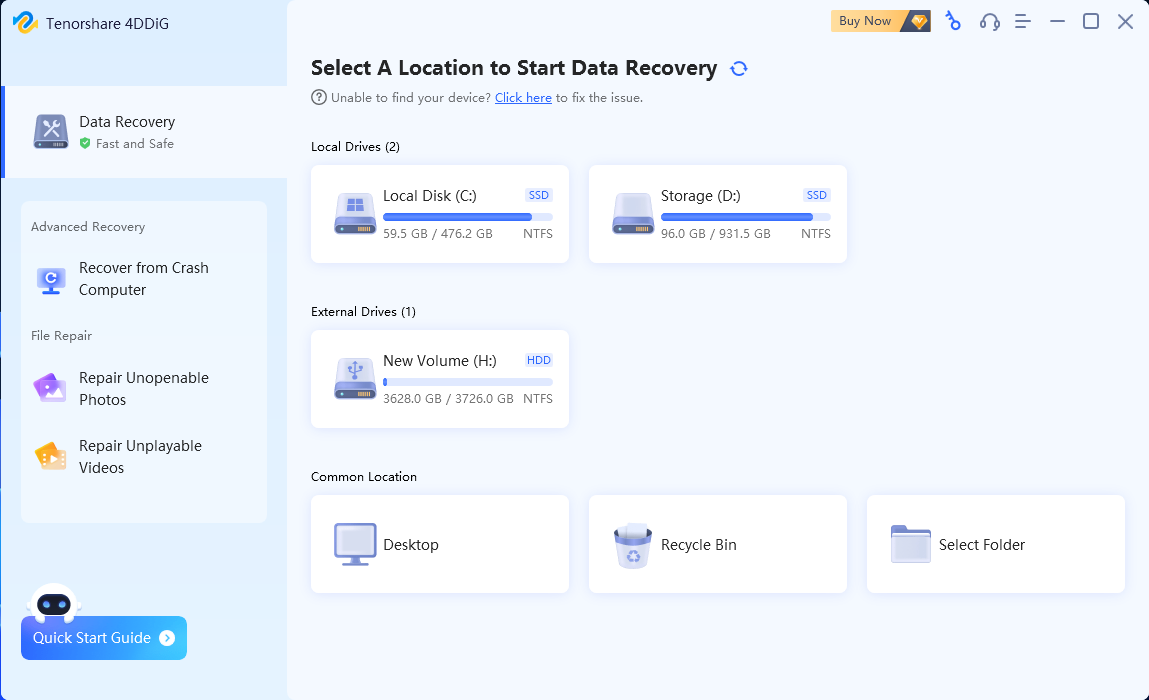
Here is another paid data recovery software application that supports Windows and Mac systems. It recovers data from all kinds of storage devices including iPhones and iPads. 4DDiG has a high recovery rate and uses a simple three-step process for restoring your lost videos. There have been some complaints from users who had problems with the recovery capabilities but, in general, the tool gets positive reviews. It’s a little less expensive than some paid versions if that is one of your concerns.
Pros
- Preview files before recovery
- Free lifetime updates
- 30-day money-back guarantee
- 24/7/365 help center availability
- Potential problems trying to use the money-back guarantee
OS support: Windows, macOS
Price: Windows $59.95, macOS $69.95
7 Fixes for Hard Drive that is Not Detected
Several issues can lead to your hard drive becoming undetectable. For example, file system errors, physical damage, and connectivity issues are the most common causes. Try the below fixes to try bringing your hard drive back to its working condition.
Fix 1: Physical connectivity
The first thing to do is to try the drive in another port if one is available. You want to eliminate the possibility that the problem is with the interface and not with the drive. It also might be that the cable is bad. Try swapping cables. It just might solve your connectivity problem.
![]()
Fix 2: Drive naming
The drive needs to have a unique drive name for Windows to recognize it in File Explorer. If the drive has not been assigned a letter or is trying to use the same name as another drive, you need to use Disk Management to resolve the issue. Once the naming conflict is addressed, try accessing the drive again. You should be successful this time. Here’s how to do it:
- Open Windows Disk Management.
- Locate the drive whose name you want to change. If you are unsure, right-click and select Explore to verify the data on the drive before you rename it.
- After verification, right-click the drive and select Change Drive Letter and Paths.
- Choose Change and select a name for the drive in the Assign the following drive letter drop-down box.
- Click OK and the Yes when warned that some programs may not work correctly with the renamed drive.
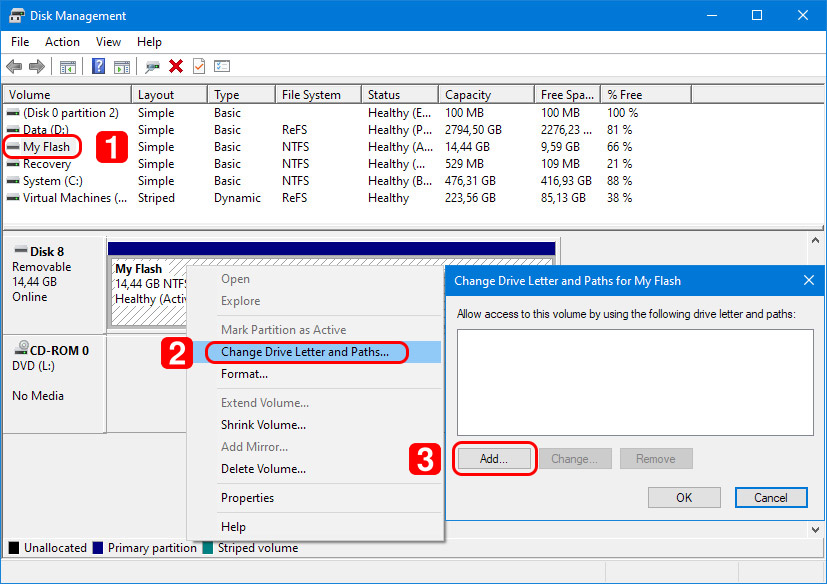
Fix 3: Check Disk Utility
A hard drive may be undetectable if it has logical errors or physical damage, and that’s where CHKDSK comes in. CHKDSK is a built-in command-line utility on Windows that checks a drive’s file system for logical integrity and the physical drive for bad sectors. It tries to automatically detect and fix those issues, consequently fixing the hard drive and bringing it back to its normal working condition.
Here’s how you can use the CHKDSK command:
- Launch an elevated Command Prompt by typing command prompt in Start Menu search and selecting the Run as administrator option for Command Prompt.
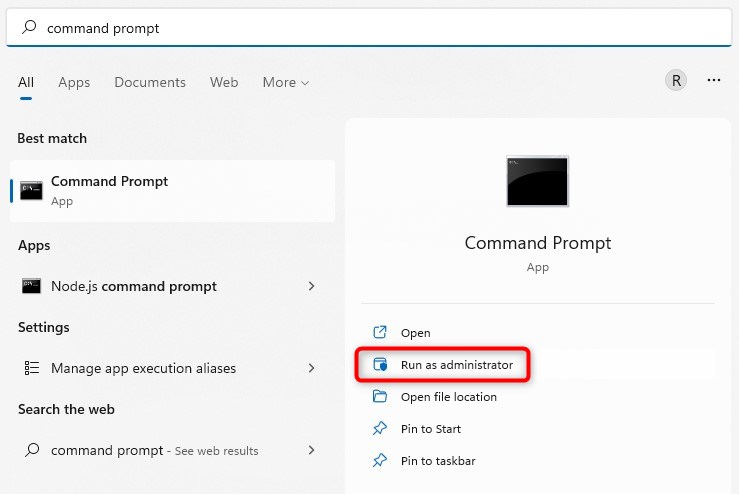
- Type the following command in the Command Prompt and press Enter:
chkdsk F: /f
(replace F with the drive you’re trying to fix)
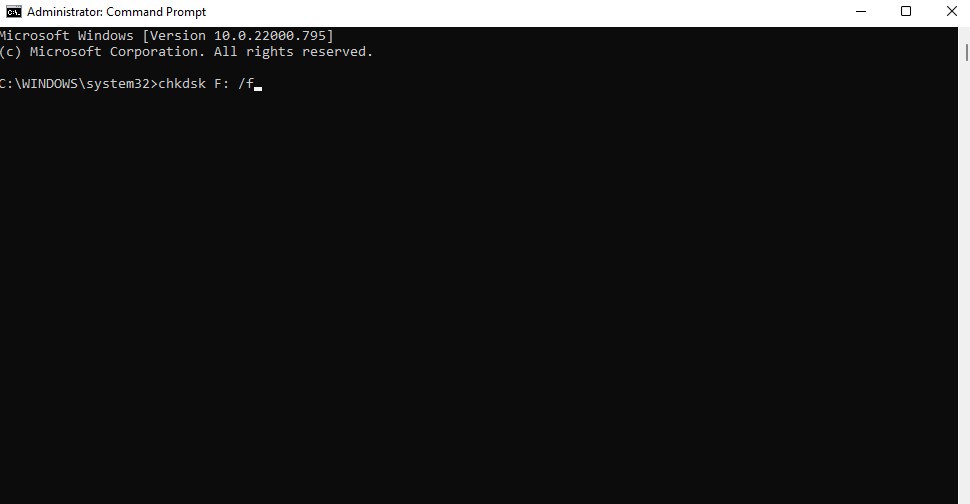
Once the scan completes, it will tell you if it found any issues and whether they were fixed. Check if your hard drive works as it should after the scan.
Fix 4: Microsoft Diagnostic Troubleshooting Wizard
Microsoft Diagnostic Troubleshooting (msdt) wizard is another built-in utility. Though not as commonly used as chkdsk, msdt might just help you fix the hard drive issue. The tool collects information from your PC and sends it to Microsoft Support. The team at Microsoft inspects the issue and tries to come up with a solution.
Since your PC needs to send information, your computer should be connected to the internet when you run msdt. Here’s how you can use this utility to see if it can help with the hard drive problem:
- Search for command prompt in the Start Menu search and select Command Prompt.
- Execute the follow command:
msdt.exe -id devicediagnostic
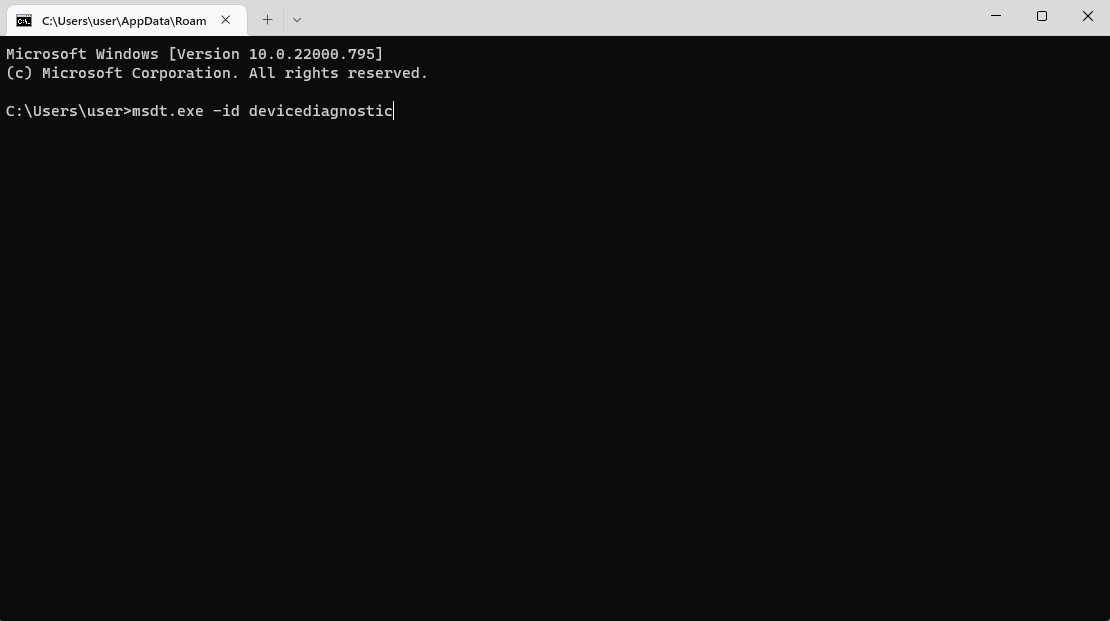
- You’ll see a Hardware and Devices troubleshooter. Click Next.
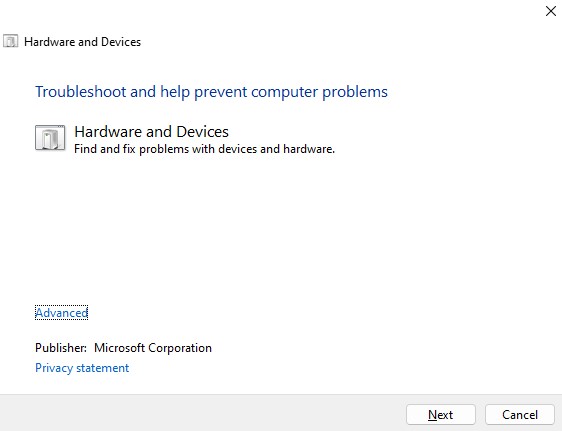
- The wizard will list the devices it finds an issue with. Select the problematic hard drive and let the wizard try to fix it.
When the process is complete, see if your hard drive functions normally.
Fix 5: Check the Drivers
Windows automatically install device drivers when you connect a new device to the computer. However, sometimes those drivers become corrupt. If you can’t seem to access your hard drive, you might want to try reinstalling the drivers like so:
- Search for device manager in the Start Menu search and press Enter.
- When you see the Device Manager, expand the Disk drives category and select your hard drive.
- Right-click on the hard drive and select Uninstall device.
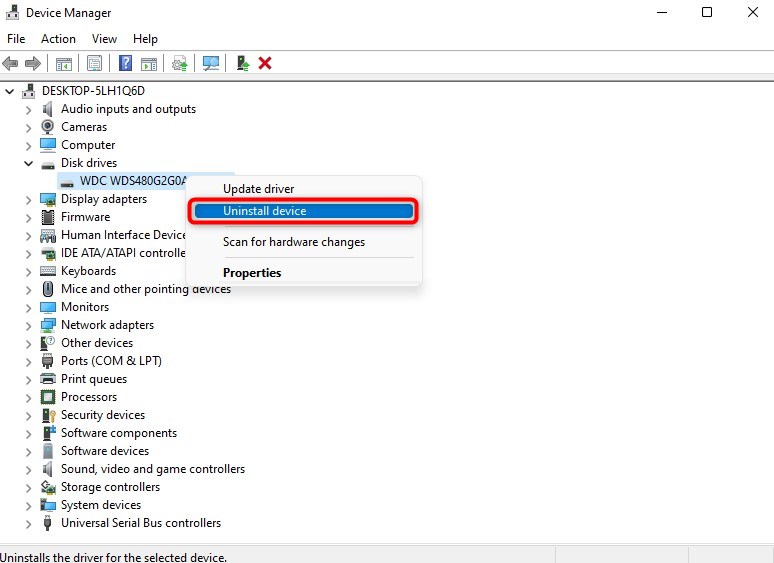
- Click on Action > Scan for hardware changes from the top ribbon. This should reinstall the latest driver for the hard drive.
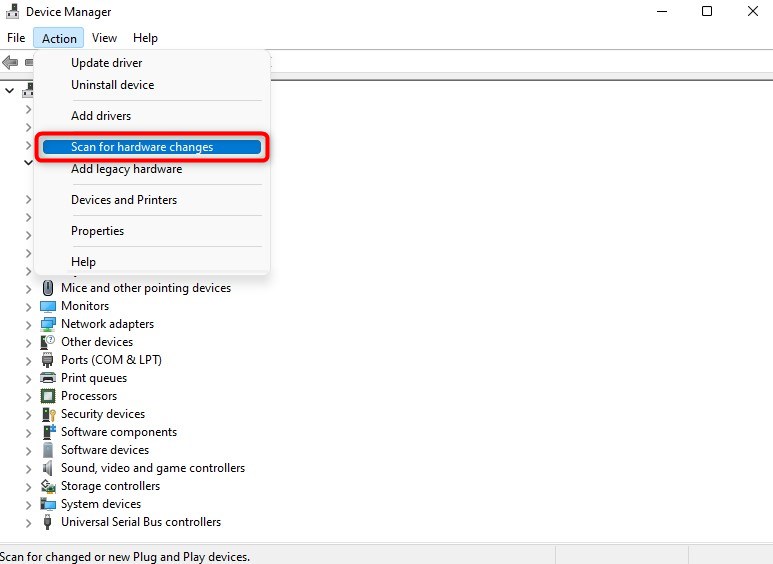
Check if the hard drive works as it should after reinstalling the driver.
Fix 6: Partition Drive in Disk Management
Sometimes, the reason you don’t see the drive is because it has unpartitioned space.
To verify this, search for disk management in the Start menu search and press Enter. This will launch the Disk Management console. If some or all of the space on your hard drive appears as unallocated, you’ll need to create a partition like so:
- Right-click on the unallocated space and select New Simple Volume.
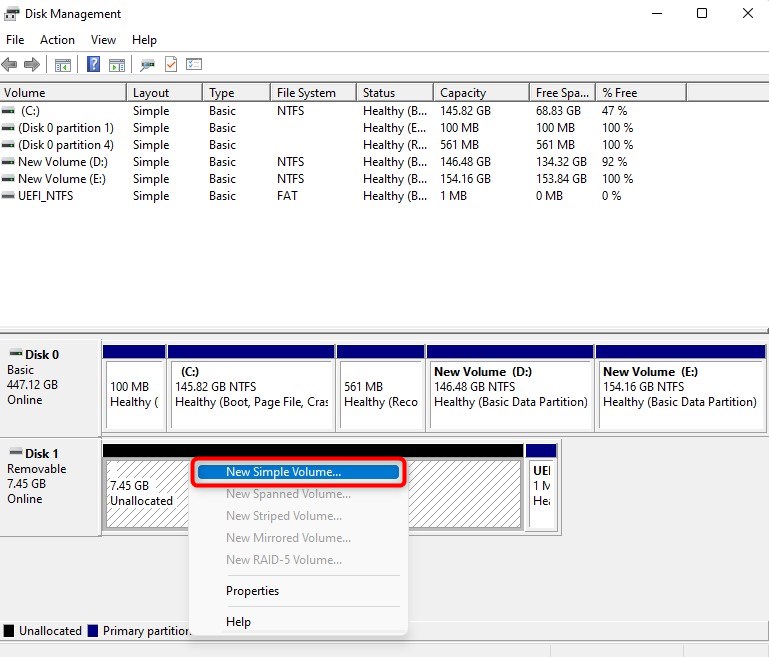
- Click Next on the wizard welcome screen. Select the size of the volume and click Next again.
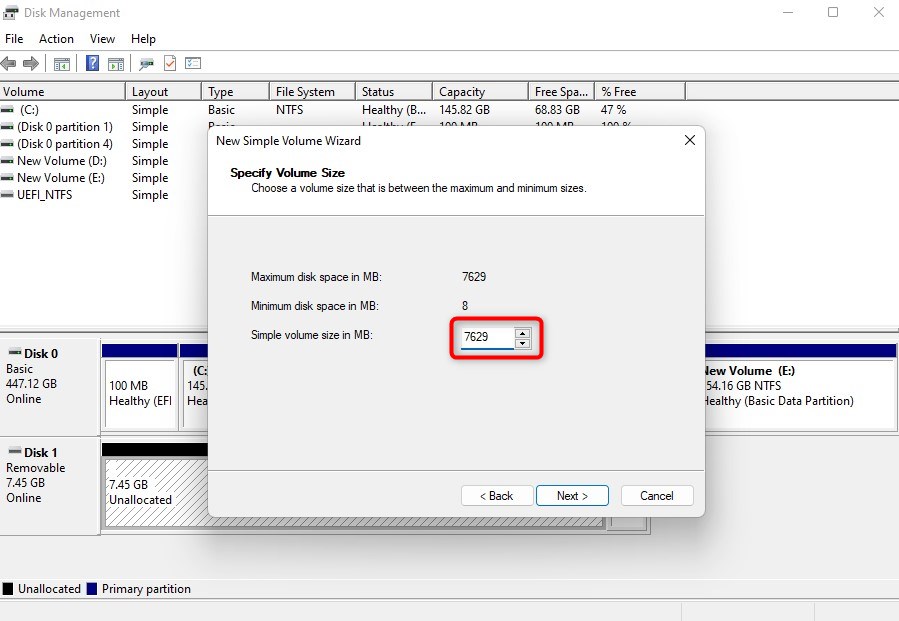
- Select the drive letter you want to assign, and click Next.
- Select NTFS as your file system. If you also plan on using the drive on other operating systems, select FAT32 or exFAT.
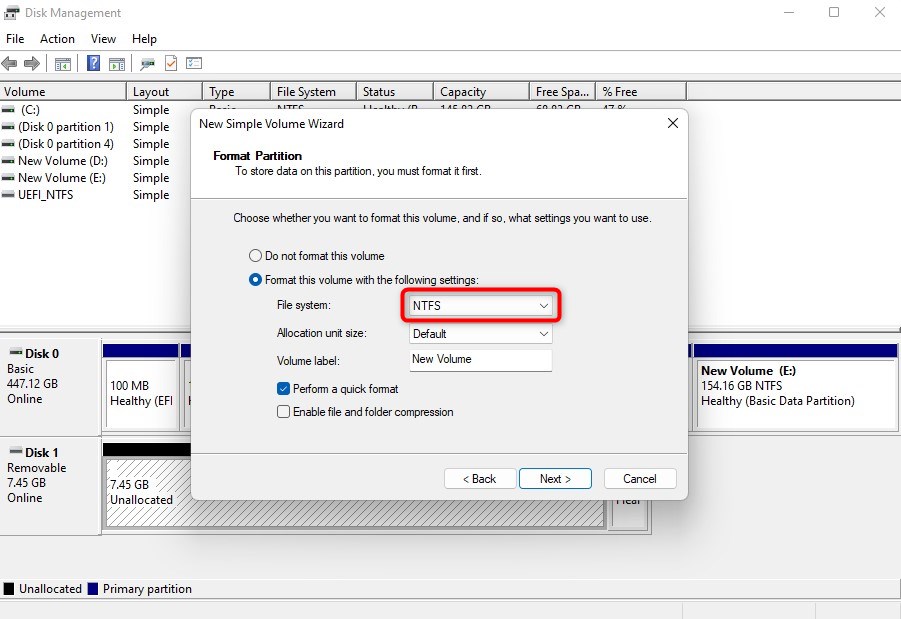
- On the next step, confirm the details and click Finish.
Your drive should then be partitioned and be accessible using the File Explorer.
Fix 7: Format the Drive
If none of the solutions work, try formatting the drive. When the hard drive doesn’t appear in the File Explorer, you should use Diskpart (a built-in Windows utility) to format the hard drive. If your computer is able to read the hard drive, Diskpart should be able to access it.
- Search for command prompt in the Start Menu, hover over Command Prompt, and select Run as administrator from the right pane.
- Execute the following commands:
diskpart list disk
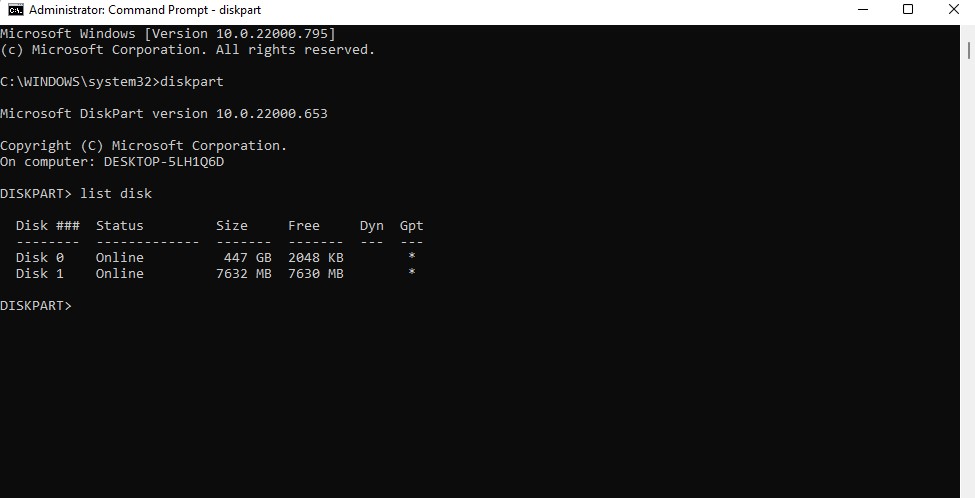
- You’ll see a list of hard drives connected to your PC. Note down the Disk ### for the hard drive you want to fix and execute the following commands:
select disk 1 clean create partition primary format fs=ntfs
(replace ntfs with fat32 if you want to format the drive as FAT32)
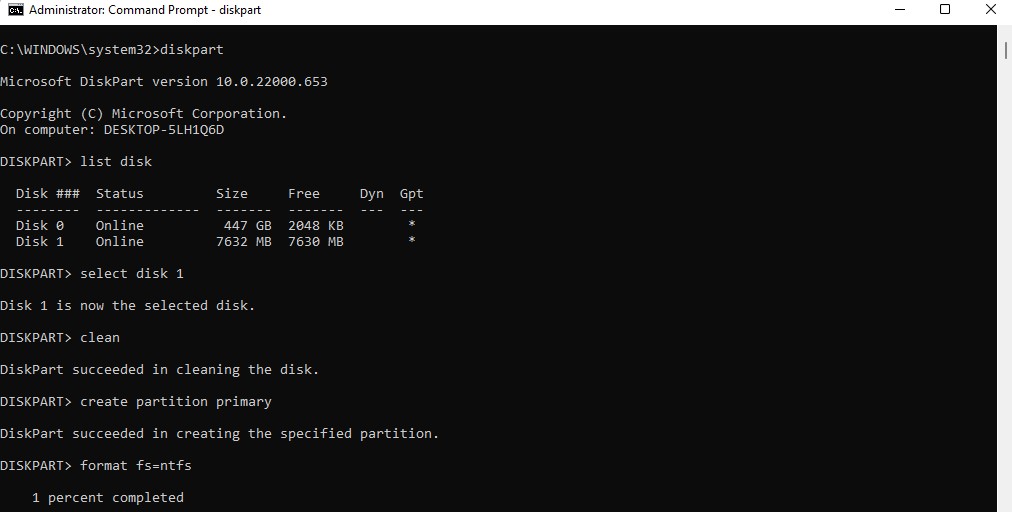
When the process completes, you’ll hopefully have access to your hard drive again.
How to Recover Data From a Damaged External Hard Drive
When a hard disk has undergone severe physical damage, data recovery software might not help. The data on your hard drive is stored in sectors. Physical damage renders those sectors unreadable, which means the information on those sectors is lost.
When you can’t recover data using data recovery software, a professional data recovery service may be able to help. When selecting a data recovery service, consider the following factors:
- Range of services: Not all services support all types of hardware. For example, many services don’t offer data recovery service for RAID arrays. So make sure the service you select does recover data from the type of storage device you have.
- Success rate: Naturally, you want a service that has a high success rate, especially when you’re trying to recover important data such as confidential documents.
- Locations: Data recovery happens in a recovery lab. The closer the lab, the faster you’ll get your data recovered, and the less you’ll pay for shipping.
You may also want to consider other factors like ISO certifications and technology depending on the data’s sensitivity.
FAQ
- Keep the drive away from excessive heat or moisture. Keep your external drive out of the sunlight and out of hot parked cars.
- Always maintain strong antivirus protection with a quality commercial application. Periodically running a scan on the external drive is a good idea to keep it free of malware.
- Take care when deleting files or formatting partitions. Make sure you have specified the target correctly. Check your work before pressing that button!

